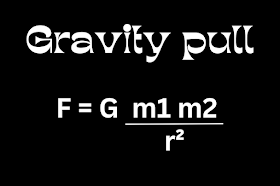After discussing a lot on science and technology on science laws. Now it's time to discuss the most asked questions i.e, what is the method of reducing friction or how we can reduce friction to enhance our work.
But before we discuss our main question let's first recap what is frictional force?
What is friction ?
Friction is a force that opposes the relative motion or tendency of motion between two surfaces in contact. It is caused by the irregularities and interlocking of the surfaces. Here are ten examples that illustrate friction:
10 daily life examples of friction force
1. Walking: When we walk, the friction between the soles of our shoes and the ground provides the necessary grip to push off and move forward.
2. Braking a vehicle: Friction is crucial for braking. When the brake pads press against the rotating wheels, friction converts the kinetic energy of the vehicle into heat, slowing it down.
3. Writing with a pen or pencil: Friction between the pen tip and the paper allows us to write by applying the necessary force to create marks.
4. Sliding down a slide: Friction between the slide and our clothes or skin creates a resistance that controls our speed and prevents us from sliding too fast.
5. Using a zipper: The friction between the zipper teeth allows us to open and close it smoothly by creating interlocking connections.
6. Playing a musical instrument: Instruments like guitars or violins require friction between the strings and the musician's fingers to produce sound.
7. Driving a car: Friction between the car's tires and the road provides the necessary traction for steering, accelerating, and maintaining control.
8. Gripping objects: When we hold objects, friction between our hands and the object's surface allows us to maintain a firm grip.
9. Slowing down on a bicycle: Friction between the brake pads and the wheel rims helps us slow down or come to a stop when we apply the brakes.
10. Using a screwdriver: Friction between the screwdriver tip and the screw's head allows us to turn the screw by applying torque, creating a threaded connection.
Now, let's come back to our original topic that was how we can reduce the friction and enhance our daily work.
7 method of reducing friction explained in detail
Reducing friction can be beneficial in various situations, such as improving the efficiency of machines, reducing our work load, and conserving energy.
For example while in converting the wind energy into electric energy we need a fast moving turbine that can move flawlessly. But the barrier or gear of the shuffle Motor makes them slow. This is due to the friction applied. So the question is how we can reduce that frictional force so that we generate more energy. Here are seven methods commonly used to reduce friction:
Lubrication: Applying a lubricant between two surfaces can create a thin film that separates them, reducing direct contact and friction. Common lubricants include oils, greases, and solid lubricants like graphite or Teflon.
Smoothing surfaces: Polishing or smoothing the surfaces in contact can reduce friction by minimizing surface roughness and irregularities. This is often done through processes like grinding, honing, or lapping.
Streamlining: In fluid dynamics, streamlining refers to the process of shaping objects in a way that reduces air or fluid resistance. Smooth and aerodynamic designs can minimize the frictional drag, leading to improved efficiency.
Using ball bearings or roller bearings: Bearings consist of small rolling elements, such as balls or rollers, placed between two surfaces. They allow smooth rotation or movement by reducing the friction between the surfaces.
Reducing contact force: Reducing the weight or pressure exerted on the surfaces in contact can decrease the frictional force. This can be achieved by using lighter materials, redistributing loads, or utilizing mechanisms like counterweights.
Using low-friction materials: Choosing materials with naturally low friction coefficients can help reduce friction. For example, polymers like Teflon or certain metals like bronze or brass can exhibit low friction properties.
Employing air or fluid cushions: Introducing air or fluid cushions between surfaces can significantly reduce friction. Air bearings or hydrodynamic bearings rely on a thin layer of air or fluid to separate the surfaces, allowing for smooth movement.
It's important to note that the effectiveness of these methods can vary depending on the specific application and conditions. The appropriate method(s) for reducing friction should be selected based on the requirements and constraints of the system in question.






.jpg)
.jpg)





